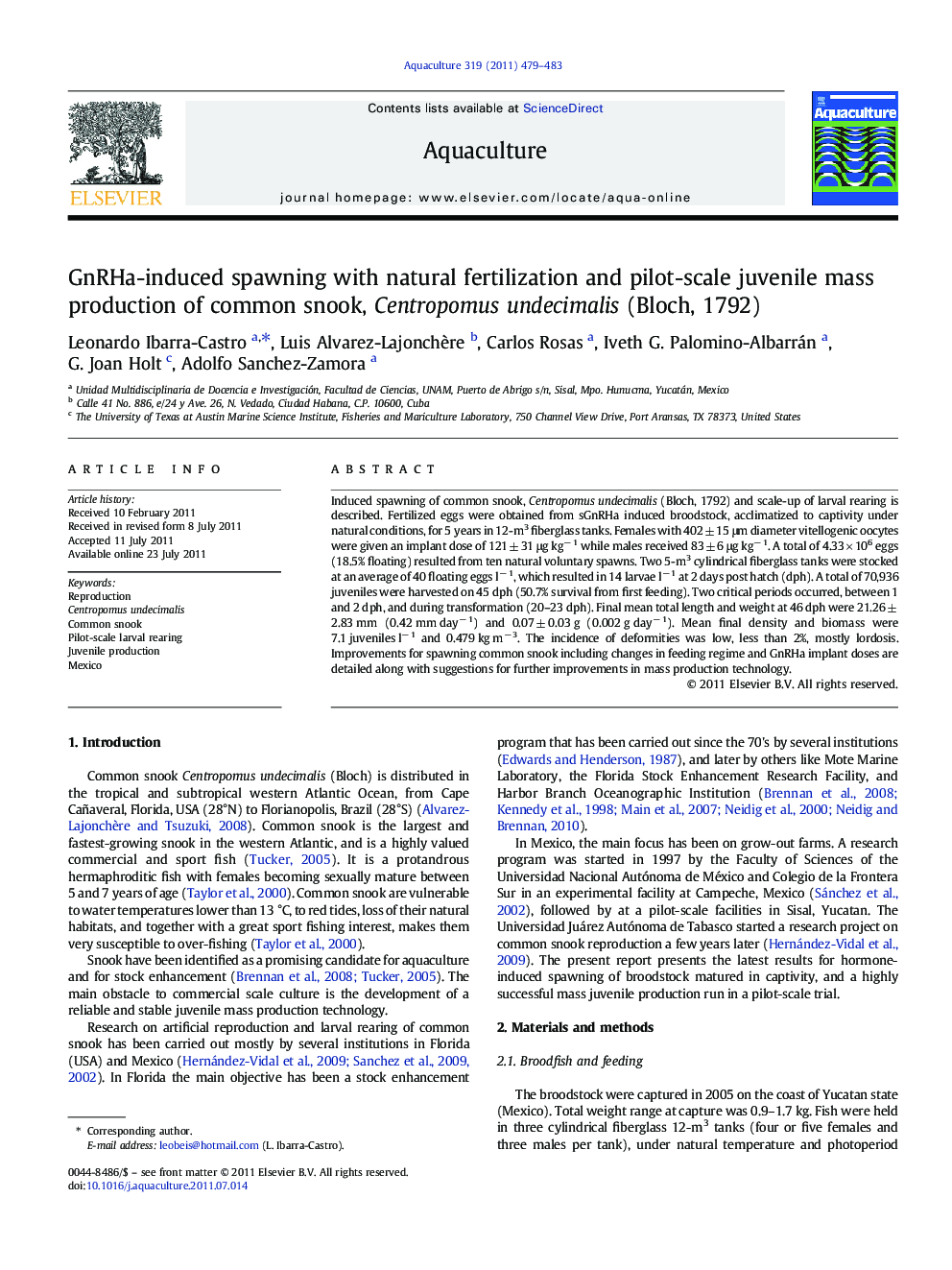| Article ID | Journal | Published Year | Pages | File Type |
|---|---|---|---|---|
| 2423011 | Aquaculture | 2011 | 5 Pages |
Induced spawning of common snook, Centropomus undecimalis (Bloch, 1792) and scale-up of larval rearing is described. Fertilized eggs were obtained from sGnRHa induced broodstock, acclimatized to captivity under natural conditions, for 5 years in 12-m3 fiberglass tanks. Females with 402 ± 15 μm diameter vitellogenic oocytes were given an implant dose of 121 ± 31 μg kg− 1 while males received 83 ± 6 μg kg− 1. A total of 4.33 × 106 eggs (18.5% floating) resulted from ten natural voluntary spawns. Two 5-m3 cylindrical fiberglass tanks were stocked at an average of 40 floating eggs l− 1, which resulted in 14 larvae l− 1 at 2 days post hatch (dph). A total of 70,936 juveniles were harvested on 45 dph (50.7% survival from first feeding). Two critical periods occurred, between 1 and 2 dph, and during transformation (20–23 dph). Final mean total length and weight at 46 dph were 21.26 ± 2.83 mm (0.42 mm day− 1) and 0.07 ± 0.03 g (0.002 g day− 1). Mean final density and biomass were 7.1 juveniles l− 1 and 0.479 kg m− 3. The incidence of deformities was low, less than 2%, mostly lordosis. Improvements for spawning common snook including changes in feeding regime and GnRHa implant doses are detailed along with suggestions for further improvements in mass production technology.
